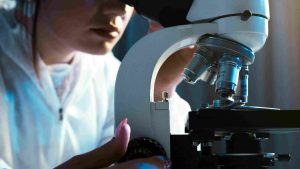Hepatitis has caused severe liver diseases and affects the worldwide population, in which hepatitis C is the most common type responsible for mortality cases. Patients with hepatitis C are given drugs through various routes, including oral and parenteral delivery. Oral is preferred to parenteral for its benefits when it comes to the easy use for patient compliance. However, oral drug delivery systems also face major challenges in addressing various problems such as poor bioavailability and drug targeting. In most cases, a larger dose is used as compensation to achieve effective plasma drug concentration. However, it tends to increase the incidence of adverse effects relevant to such high doses.
As an alternative, the mucosal routes of administration, such as sublingual, attract most of the recent interests. The sublingual route offers advantages such as rapid and direct absorption into the systemic circulation following local administration under the tongue and avoiding the first-pass effect; moreover, reduced side effects with the use of lower drug doses and improved patient compliance.
Curcumin is a natural compound that is poorly water-soluble and poor in permeability, hence categorized as a Biopharmaceutics Classification System (BCS) Class IV substance. It exhibits poor gastric absorption and rapid degradation in the gastrointestinal (GI) tract, the factors that made it the major problem for its clinical use as a therapeutic agent. On the other hand, curcumin has been reported as an effective antivirus for hepatitis C (anti-HCV) and used to treat hepatitis diseases.
From this fact, many studies on the absorption and biodistribution of curcumin have been carried out. One of the strategies in the formulation of curcumin in pharmaceutical preparations is its use in the form of liposomes distributed directly into the liver much higher than other organs. The use of liposomes is very promising to facilitate the anti-HCV mechanism of curcumin in interacting directly with liver cells, which will inhibit virus attachment and prevent virus transmission between cells. In addition, the use of liposomes is also a solution to the main problem in the development of curcumin into a drug dosage form due to its poor bioavailability. Liposomes have a chemical structure that allows them to self-assemble into a spherical structure in aqueous solutions. The drug encapsulated by liposomes also prolongs contact with the mucosal surface due to the adhesive property, which increases drug absorption and bioavailability.
Among many liposome manufacturing techniques, thin-film hydration has been widely used and is the most common to produce drug-loaded liposomes. Thin-film hydration is a simple, continuous technique to produce liposomes from a large variety of phospholipids and is scalable in industrial scale-up for mass production that is prospective for the pharmaceutical industries. Liposomes can be made up of various phospholipid compounds such as phosphatidylcholine, phosphatidylamine, etc. Furthermore, a strategy in the formulation of combining this liposome system with a mucoadhesive hydrophilic polymer as a matrix can also help adhere liposomes in the mucosal tissue and facilitate effective and direct absorption. These polymers facilitate wetting and adhesion to mucosal tissues to facilitate drug release and absorption. Hydroxypropyl methylcellulose (HPMC) fits such requirements as a polymer that is hydrophilic and also mucoadhesive. HPMC is soluble in water and at the same time can form a gel with only a small amount of water. It has potencies for the enhanced release and absorption of CUR to the systemic circulation through mucosal tissues..
The presented study aimed to develop liposomal solid gels as an alternative dosage form suitable for sublingual administration of CUR to enhance curcumin’s bioavailability. Three different natural phospholipids were used in the CUR-loaded liposomal solid gel formulations. They are soy phosphatidylcholine (SPC), hydrogenated-soy phosphatidylcholine (HSPC), and egg phosphatidylcholine (EPC). Further, the curcumin liposomes were entrapped into the HPMC solid gel and freeze-dried to obtain the dry products. The physical characteristics were studied, including microscopic structures, solid-state characteristics, and thermal properties. Moreover, the cell cytotoxicity using Huh7it cell line was also determined. Huh7it is hepatocyte culture, which was derived from human cells. Hepatocytes are the target of infection by hepatitis C viruses (HCV) in which they are the host cell for the viruses to replicate, thus very relevant to the study.
The SEM images confirmed that curcumin liposomes were intact and trapped in the solid gel matrix. The XRD data showed flat patterns diffractograms of the formulations, confirming the transformation of CUR from crystalline to amorphous form. Then the thermal properties of the dry product were analyzed by DTA which showed a single phase transition indicating all the materials had melted into a homogeneous mixture. The XRD and DTA data revealed the molecular dispersion of CUR in the developed formulations. The cytotoxicity data provided as cell cytotoxicity 50 (CC50) confirmed that the developed liposomal solid gels were not cytotoxic to very high levels, and indicated that they were safe to use at high doses. All this data confirmed that CUR-loaded liposomal solid gels exhibited the potential and offered an alternative dosage form to improve the therapeutic efficacy of curcumin as an anti-HCV.
Author: Helmy Yusuf, S.Si., M.Sc., Ph.D., Apt.
Article title: Formulation Design and Cell Cytotoxicity of Curcumin-Loaded Liposomal Solid Gels for Anti-Hepatitis C Virus









